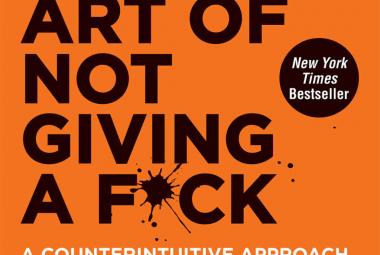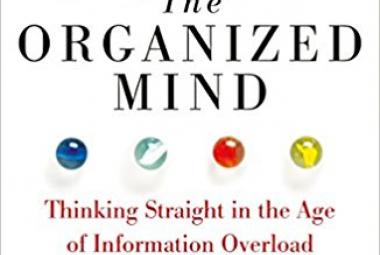There are multiple theories on the market that can help you understand your own behavior as well as that of others. Based on two axis developed by Carl Jung (introvert versus extravert and Thinking versus Feeling), four quadrants can be made that describe a certain personality. Each personality is represented by a color: red, yellow, green and blue.
This article will describe these two axis in more detail, as well as the four colors that result from them.
Whether somebody is INTROVERT OR EXTRAVERT is the first axis described by Carl Jung and has nothing to do with being loud or shy as most people think, but more with the preferred way of recharging your energy levels. Do you need time for yourself? Or do you prefer hanging out with a group to regain energy?
Introverts like to spend their energy thinking about concepts and ideas. They do not need many external stimuli and are therefore quickly ‘over stimulated’. They think before the act, look for quietness when they need to focus and choose to understand the world rather than to change it. Introverts prefer to communicate by text over speech, because they can then carefully think about how they would like to express themselves. Introverts also generally do not like sudden changes. Presenting in front of a large group is often tiring for an introvert, and the challenge for an introvert trainer would be to find enough peace and quiet to recharge. Finally, they find it hard to promote themselves.
Extraverts on the other hand, get more energy from other people and like to spend energy doing things and spending time with people. They need external stimuli to perform, and rather just try out something instead of thinking about it too much. Extraverts like to keep themselves busy and feel bored when they are not. They are good at negotiating and leaving a good first impression of themselves. Challenges for the extravert are listening (especially to introverts, who need to be given the opportunity) and keeping an eye on the details.
The second axis that determines what quadrant your personality fits in is THINKING VERSUS FEELING. With this spectrum, Jung describes the way in which people take decisions: based on logic (Thinking) or based on people and their emotions (Feeling).
Thinkers are the people who start their thinking from logic (from their head). They tend to see the world in black and white and can therefore take quick decisions based on the current information available. Value is put above Values and telling the truth is more important than negotiating with tact. Because thinkers tend not to show emotions too much, doing business with a thinker is fast and efficient. The downside is, that doing business with a thinker is somethings perceived as cold or heartless by the feelers.
Feelers on the other hand base their decisions rather on their gut feeling (their heart) and take their personal relationships into account when communicating. Values are put above value and decisions are taken based on what it means for other people involved rather than just facts. Being tactful is more important than the hard truth and feelers can therefore sometimes also ignore this unpleasant truth. Feelers are thought to be ‘emotional’ and ‘unreliable’.
Based on the two axes defined by Carl Jung, different theoretical models have been defined using THE FOUR COLORS OF PERSONALITY TYPEs. Each color has its own strengths and weaknesses.
Red are the extravert thinkers. Their strengths are thinking objectively, being able to separate tasks from the person, and they are competitive. Their motto is: Let’s do it now, and on a good day, red people are determined to achieve results. They are good at managing a team based on instruction.
Stress situations for red people arise due to a lack of focus or when it takes a while before a decision is made. When red people experience stress, they get inpatient, annoyed or even aggressive. It is important to give them control when this happens by taking a decision (or even let them take it) or call a time out.
Yellow people are the extravert feelers. Compared to red people, they are more personally involved in the decisions they take and are good in motivating others. Their motto is: Let’s do it together, and on a good day they know how to motivate others with their enthusiasm.
Yellow people experience stress when they are restricted in their flexibility, when there is no interaction, or the possibility to have fun. Yellow people respond to stress by being over-responsive, or by trying to push their though with many arguments. To get out of this situation, yellow people need to get space to move, save their face or you can simply distract them by changing the topic.
Green people are the introvert feelers. They strive in an informal setting and they are the colleagues that make sure relationships between team members are ok. Their motto is: Let’s do it with care, and on a good day, they are patient, relaxed, encouraging and like to share information.
Green people experience stress when people are treated unfairly, when values are at stake or when they are on time pressure. They respond to stress by being stubborn, resistant or by retreating from the conversation. To help green people get out of the stressful situation you need to bring back the interpersonal trust using personal contact.
Blue people, the fourth and final personality type, are the task oriented introvert thinkers. They are strong in following processes and standards, and are usually strong in analytics, having an eye for the details. Their motto is: Let’s do it correct, and on a good day, blue people are formal, precise, careful and ask a lot of questions.
Blue people experience stress when they think bad work is going to be delivered, information is missing or when tasks are being rushed. They respond to this stress by keeping on asking more questions, what can lead to discussions about a lot of minor details.
The help a blue person getting out of the stressful situation, it is important to ask him or her for advice, and offer emotional support.
The best thing about these four colors is that THERE IS NOT ONE COLOR BETTER THAN THE OTHER and the best teams even have all of the colors represented. Knowing what your preferred way of working is, and the preferred way of your colleagues, can help you improve your team work.
More interestingly, most people are not 100% one color, as both axes can be seen as a spectrum on which you can move from completely left to completely right. However, most people do have one dominant preferred color.
The four personality colors are a great first step in analyzing our personal preferences. It is however also possible to dive a level deeper.
Each quadrant can be split into two smaller pieces, resulting in 8 different pieces all together. Red, for instance, can be split in a part that is more blue, and a part that is more yellow.
These are the 8 personality types described by Carl Jung, and will be described in the next article.
Continue to:
Personality Types part 2: The 8 Roles
More information about Carl Jung and his personality types:
(Link will take you to your local Amazon Store)














